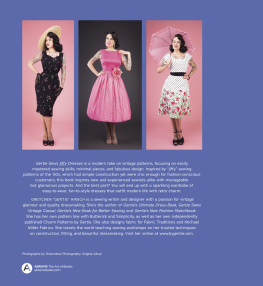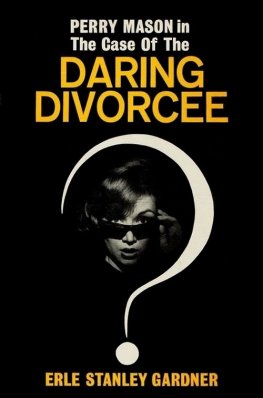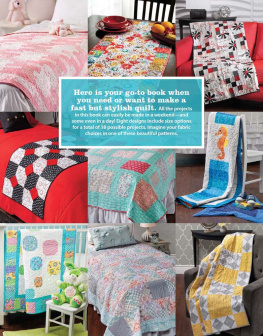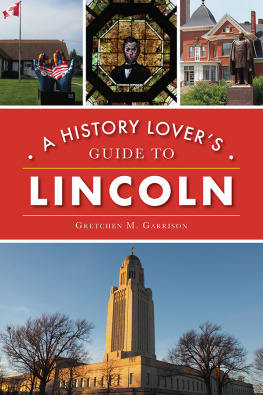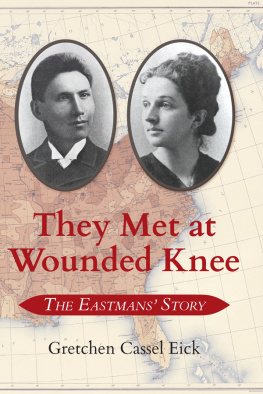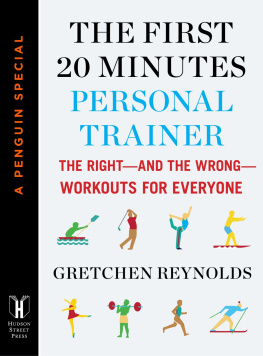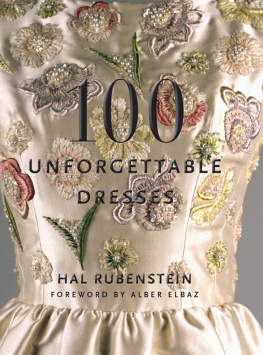Gretchen Hirsch - Gertie Sews Jiffy Dresses
Here you can read online Gretchen Hirsch - Gertie Sews Jiffy Dresses full text of the book (entire story) in english for free. Download pdf and epub, get meaning, cover and reviews about this ebook. year: 2019, publisher: Abrams, genre: Home and family. Description of the work, (preface) as well as reviews are available. Best literature library LitArk.com created for fans of good reading and offers a wide selection of genres:
Romance novel
Science fiction
Adventure
Detective
Science
History
Home and family
Prose
Art
Politics
Computer
Non-fiction
Religion
Business
Children
Humor
Choose a favorite category and find really read worthwhile books. Enjoy immersion in the world of imagination, feel the emotions of the characters or learn something new for yourself, make an fascinating discovery.
- Book:Gertie Sews Jiffy Dresses
- Author:
- Publisher:Abrams
- Genre:
- Year:2019
- Rating:4 / 5
- Favourites:Add to favourites
- Your mark:
- 80
- 1
- 2
- 3
- 4
- 5
Gertie Sews Jiffy Dresses: summary, description and annotation
We offer to read an annotation, description, summary or preface (depends on what the author of the book "Gertie Sews Jiffy Dresses" wrote himself). If you haven't found the necessary information about the book — write in the comments, we will try to find it.
Gertie Sews Jiffy Dresses — read online for free the complete book (whole text) full work
Below is the text of the book, divided by pages. System saving the place of the last page read, allows you to conveniently read the book "Gertie Sews Jiffy Dresses" online for free, without having to search again every time where you left off. Put a bookmark, and you can go to the page where you finished reading at any time.
Font size:
Interval:
Bookmark:


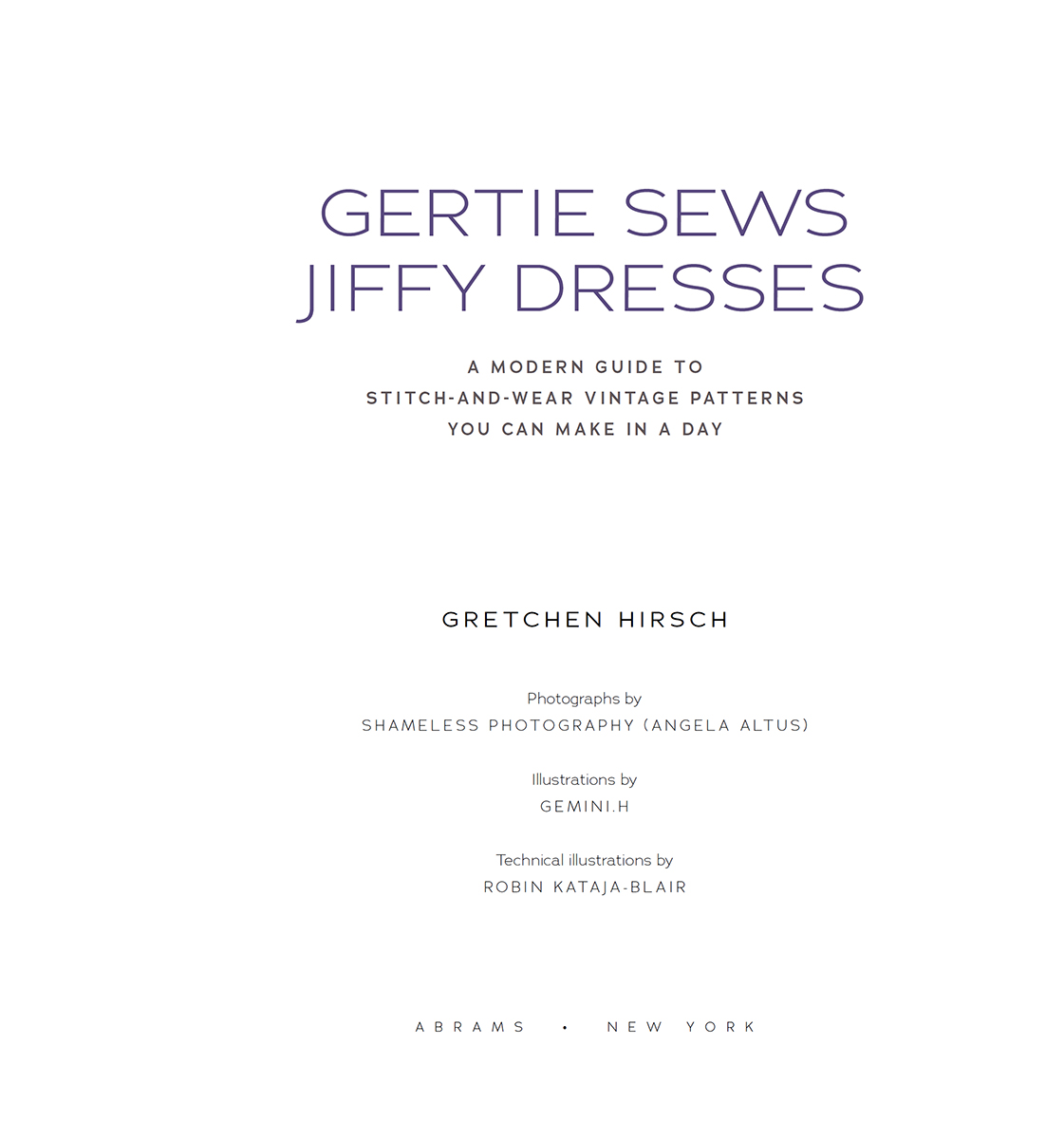
Over the years, Ive become known for my obsession with advanced sewing techniques, taking my cues from the vintage dressmaking books I adore so much. Ive espoused a love of complicated tailoring and spent hours pad-stitching lapels. Ive become so acquainted with finely engineered strapless bodices that I could probably steel-bone a princess seam in my sleep. But as I started traveling and teaching more (with less time at home for sewing), I also became a devotee of a sort of guilty pleasure: the quick and easy dress. The kind of dress that you can cut out in the morning and wear on a date in the evening. Made of cheerful floral cottons, these dresses are quick and satisfying to sew, and even more fun to wear. Some of my easiest projects to sew have become staples in my wardrobe because of their low maintenance for everyday life. Everyone loves a sew-and-wear dress!
This sort of project is certainly not at odds with a vintage aesthetic. Women have always struggled to fit their love of sewing into their busy lifestyles, and the commercially available patterns of the 1950s and early 60s reflect this. Arguably the most famous home sewing pattern of all time is Buttericks 1952 Walkaway Dress, a frock so simple that you could sew it up in the morning and walk away wearing it to a luncheon. In the 50s and 60s, Simplicity published its popular line of Jiffy sewing patterns, which had minimal pattern pieces and simple construction yet were still chic enough to appeal to a fashion-conscious customer. These ideas appeal now more than ever to novice and experienced seamstresses alike.
But while I love a project that comes together almost effortlessly, I also feel conflicted about how the DIY movement has become overtaken with fast and easy projects. Fabric stores advertise no sew projects, and real skill has been eschewed for speed. Ultimately, I think the obsession with quick and easy has made us lose touch with why we wanted to start sewing in the first place: to slow down, to have tactile experiences, to take pride in a learned skill.
So why write this book? Because I want to show that its possible to cultivate real sewing skills without spending days or even weeks on a project. Sewing more projects means more practice! I always like to tell my students how I didnt become truly skilled at lapped zippers until I sewed twenty-five of them in a row for my last book, Gerties Ultimate Dress Book. Making lots of easy dresses will certainly make you a better sewer, especially if you repeat fundamental skills (like bindings, setting in sleeves, and zippers) to the point that you build muscle memory. If youre just learning, practice the dresses in this book and then challenge yourself with something more complicated (my previous books and my Charm Patterns line, for instance!).
If you are already a confident seamstress, then I hope the vintage aesthetic of the projects in this book will still appeal to you. It was important to me to design these patterns so that they could stand on their own as great examples of retro fashion, without necessarily advertising the fact that they werent that difficult to make. I was endlessly inspired by 50s-era designer Claire McCardell while designing the patterns. Her work was living proof that complicated doesnt necessarily equal chic, and that the simplest of garments can be a revelation.
Another question you may be asking is, why all dresses? Most vintage-loving ladies say dresses are their favorite thing to sew and to wear, and I enthusiastically agree. Even after devoting an entire book to the subject of dresses and several years to teaching dressmaking workshops based on that material, I dont feel done with dresses. Quite the opposite! Im endlessly fascinated by frocks, and I became enamored of the challenge of creating a library of easy dress designs that were also quite stylish.

The Patio Dress ()
In part one, you will discover the skills you need to make lovely dresses: from choosing and cutting fabric to functional and decorative finishing touches. Youll also learn fitting techniques and some simple patternmaking to customize your dress wardrobe. Part two is a collection of dresses made from five patterns (they can be downloaded at http://www.abramsbooks.com/gertie-sews-jifffy-dresses/). I show variations on each pattern as well, to illustrate that with a little ingenuity you can make one pattern multiple times with a dazzling array of results!
No matter your prior experience, I hope this book will help you discover (or rediscover!) a love of dressmaking. And I especially hope that it will remind you that sewing doesnt have to be laborious or painstaking to be satisfying and beautiful.

The Patio Dress with Short Sleeves ()

This chapter is your bible for setting the scene to sew. Start with befriending your sewing machine! Its your faithful sidekick on the road to a beautiful wardrobe of dresses. Next, well take a look at the rest of the cast of characters: all the supplies and tools youll need to have handy in order to sew skillfully.
All you really need in a sewing machine is a good straight stitch, a zigzag, and a buttonhole. Thats why I sew on a basic, all-metal mechanical machine with very few features; I just dont like a lot of extras. You probably have a relative with an old machine like this that just needs a good servicing! The old 70s Singer that I learned to sew on as a little girl is a fantastic machine, but I see people get rid of that style all the time, thinking theyre outdated and better replaced with a new computerized machine. The truth is these old metal mechanical machines are great starter setups: easy to understand and with just the right amount of features.
The best thing you can do for your dressmaking is to really get to know your sewing machine. Read through the manual, and then spend a little time threading and rethreading it and then sewing long pieces of fabric. Practice sewing with a " (1.5 cm) seam allowance by aligning the edge of the fabric with the correct line on the metal needle platethats the seam allowance that most garment patterns use (including the patterns in this book). Being able to keep a consistent seam allowance is one of the most important machine-sewing skills. If youre even " (3 mm) off on each side seam of a dress, that adds up to your garment being " (1.3 cm) smaller or bigger than you planned. And that can make a huge difference in a fitted bodice! I always remind my beginner students to look at the seam allowance guide as they sew, not the needle.

Font size:
Interval:
Bookmark:
Similar books «Gertie Sews Jiffy Dresses»
Look at similar books to Gertie Sews Jiffy Dresses. We have selected literature similar in name and meaning in the hope of providing readers with more options to find new, interesting, not yet read works.
Discussion, reviews of the book Gertie Sews Jiffy Dresses and just readers' own opinions. Leave your comments, write what you think about the work, its meaning or the main characters. Specify what exactly you liked and what you didn't like, and why you think so.

